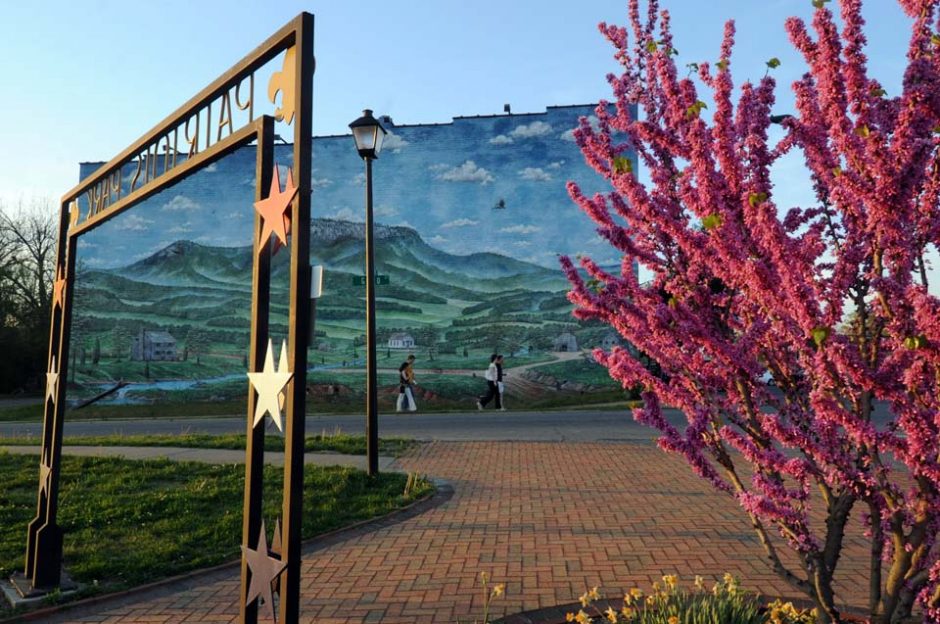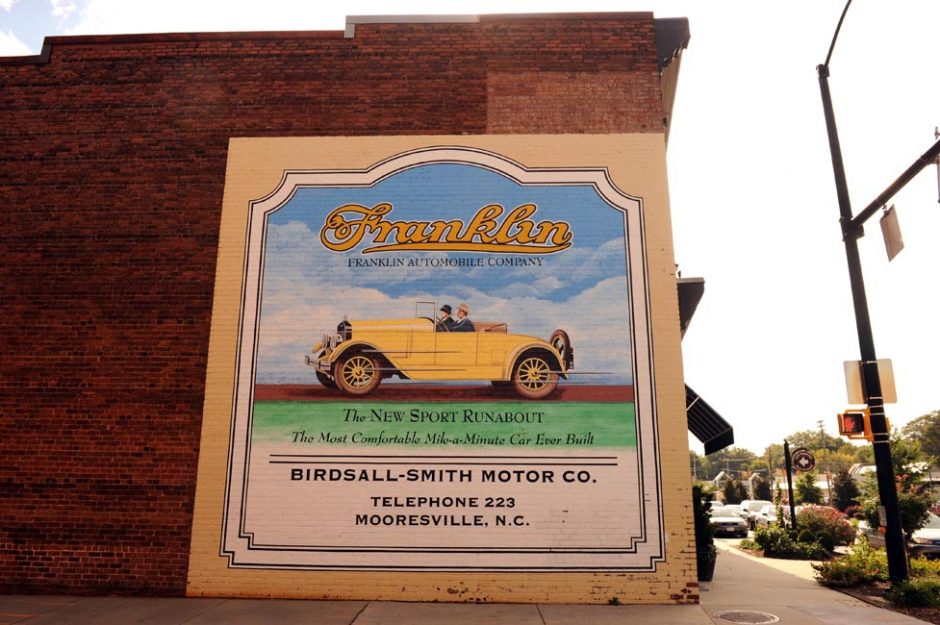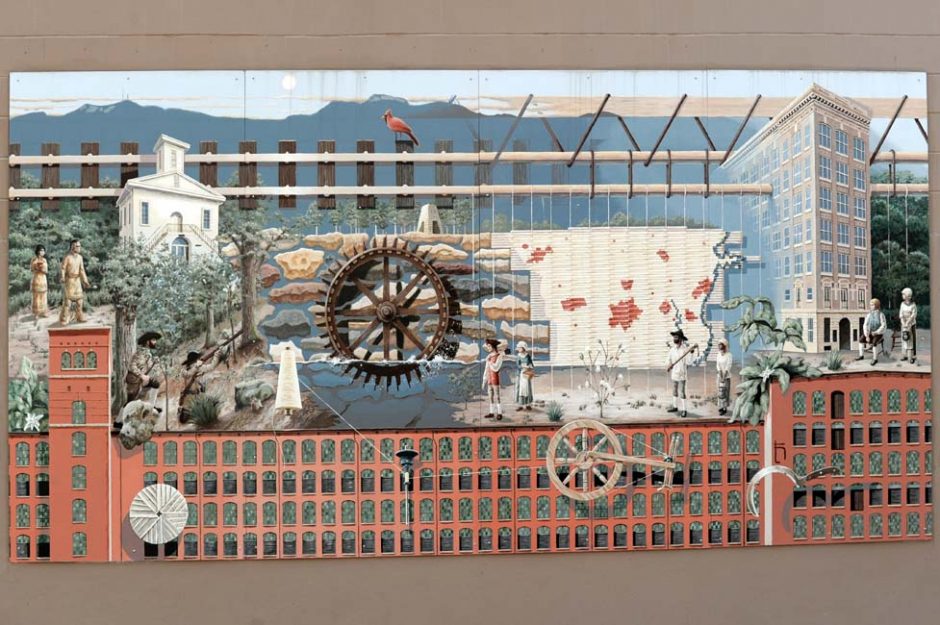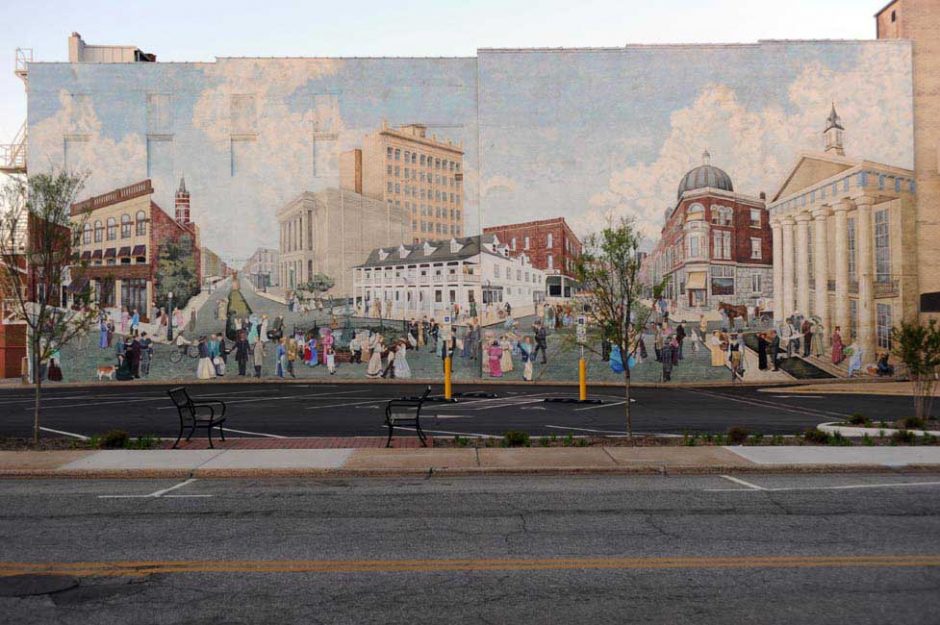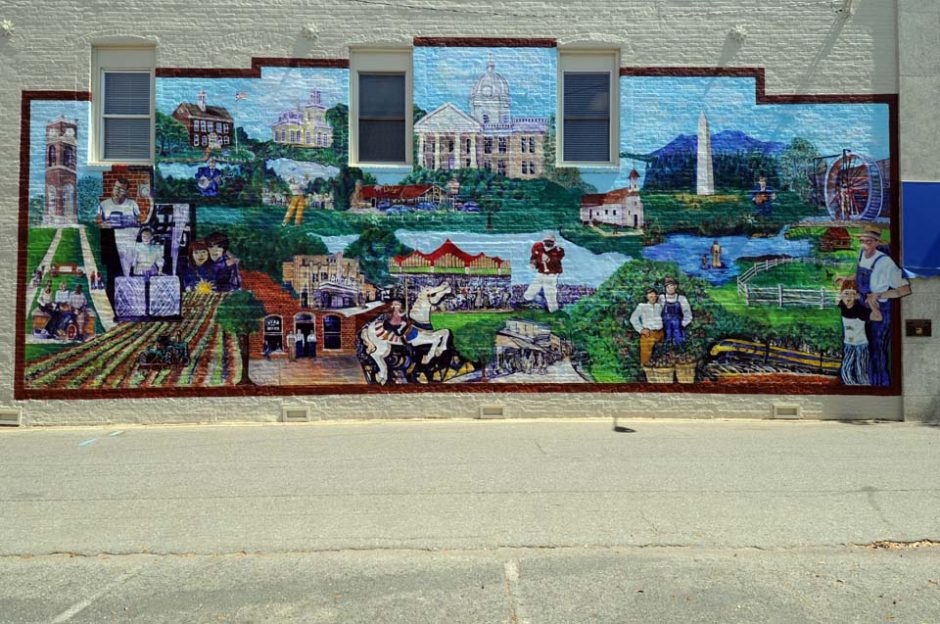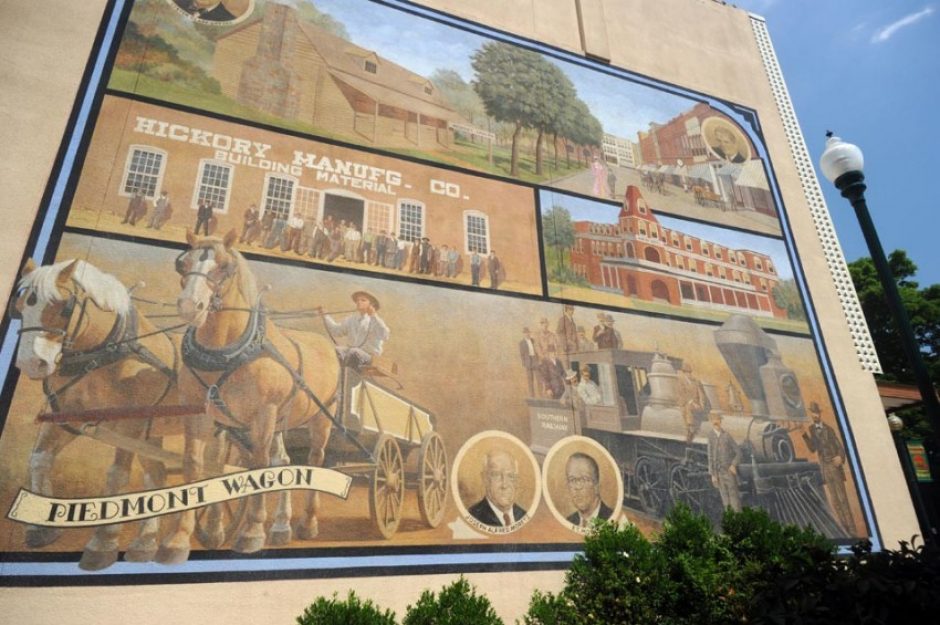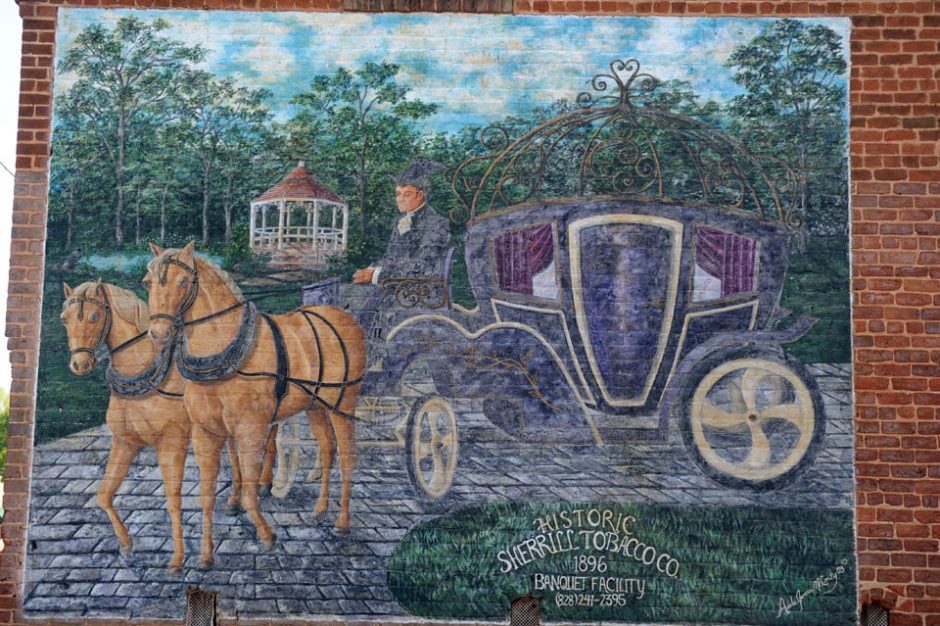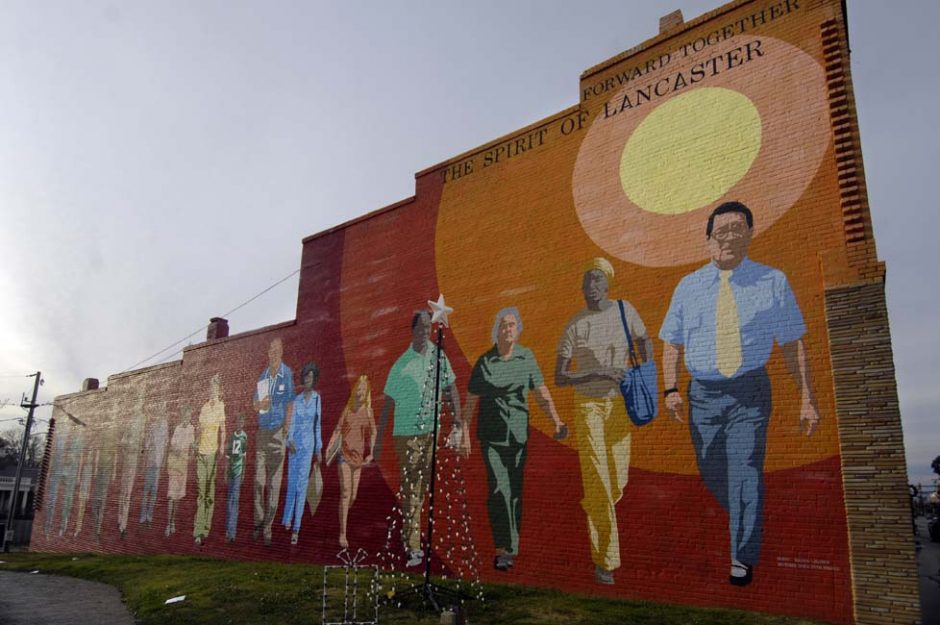Murals tell the Piedmont’s history
Photographer Nancy Pierce created this photo gallery of some of the murals found in many of the small towns and cities throughout the Charlotte region. Some were 1976 U.S. Bicentennial projects; others are just a few years old:
Kings Mountain: This mural in the Cleveland County town of Kings Mountain was completed in June 2000 by artist Clive Haynes and shows a mountain scene and rolling hills as they might have looked around the time of the important Revolutionary War Battle of Kings Mountain on Oct. 7, 1780, just 9 miles south of town.
Lancaster, S.C.: The mural, created with volunteer help from Lancaster residents, is part of a U.S. Bicentennial project that created a Mural and Sculpture Park at South Main and East Arch streets. It depicts Lancaster residents, who were selected by the project director, muralist Ralph Waldrop.
Catawba: The operators of a banquet hall in the Historic Sherrill Tobacco Co. building in downtown Catawba in Catawba County commissioned this mural of Cinderella’s carriage to reflect wedding receptions held there. Hickory artist Adele McCarty painted the mural in 2003. The building was built in 1896.
Hickory: This mural, orchestrated by the city’s Public Art Commission, was painted by Oregon artist Roger Cooke on the west-facing wall of the Deitz & Taylor Jewelry Store on Hickory’s Union Square in 2006. It depicts: The Piedmont Wagon, whose producer was the city’s first major industry; the town’s namesake Hickory Tavern; a historic view of the square from 1918; the Southern Railroad, which aided in the town’s development; the Huffry Hotel, a former downtown landmark; and workers in front of the Hickory Manufacturing Co. It also features four prominent Hickory residents: principal E.T. Moore, merchant Alex Shuford, newspaper publisher Lester Clark Gifford and manufacturer Alfred Moretz.
Chester, S.C.: One of many murals in Chester, this one was commissioned by People’s National Bank in 1979, according to city officials. It was designed and painted by Steve Ellison of Rainbow Graphics in Clemson, S.C., according to the city and the Chester County Historical Society. Depicting a cow, fruit stand and bales of cotton, the work is a nod to the area’s agricultural heritage.
Shelby: The downtown mural, dedicated Feb. 23, 2005, was a project to commemorate the centennial of the Shelby Rotary Club. It depicts scenes from Cleveland County.
Salisbury: Spruced up in 2010, downtown Salisbury’s mural on West Fisher Street is “Crossroads: Past and Present.” It was designed and painted from 1978 to 1981 by Salisbury native Cynvia Arthur-Rankin and includes the likenesses of some 150 local residents, most of them still living, painted in turn-of-the-century dress. Arthur-Rankin painted the mural through a Third Century Artists Program created during the 1970s recession, which funded 100 artists in the state, she told the Salisbury Post last year. A nonprofit Mural Preservation Inc. was formed to maintain the work. It helps raise money by adding people to the mural, which originally depicted 100 people, the Post reported.
Gastonia: This mural at South Street and Main Avenue was painted by Gaston County native Ty Hobson and commissioned by the Gaston Arts Council for its 30th anniversary in 2009. In the background is a loom that fades into a railroad track. Other features: The Loray Mill, a major textile plant; a former county courthouse in Dallas, N.C.; the seven-story Lawyers Building, known as the city’s first skyscraper; the Catawba Indians; the Overmountain Men, who fought in a key Patriot victory in the Revolutionary War’s Battle of Kings Mountain nearby; a cotton plant; the locally abundant long-leaf magnolia; and the cardinal, North Carolina’s state bird.
Mooresville: Bob and Millie Amon had this mural painted on the side of their historic building at Main Street and Center Avenue. They also renovated the building and adjoining ones. The Mooresville Tribune reported that the mural was based on advertising done for the Mooresville Birdsall-Smith automobile company, which carried the Franklin auto early in the 20th century.
